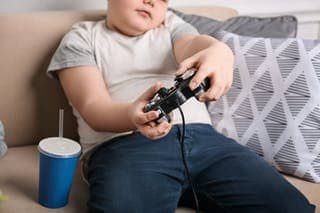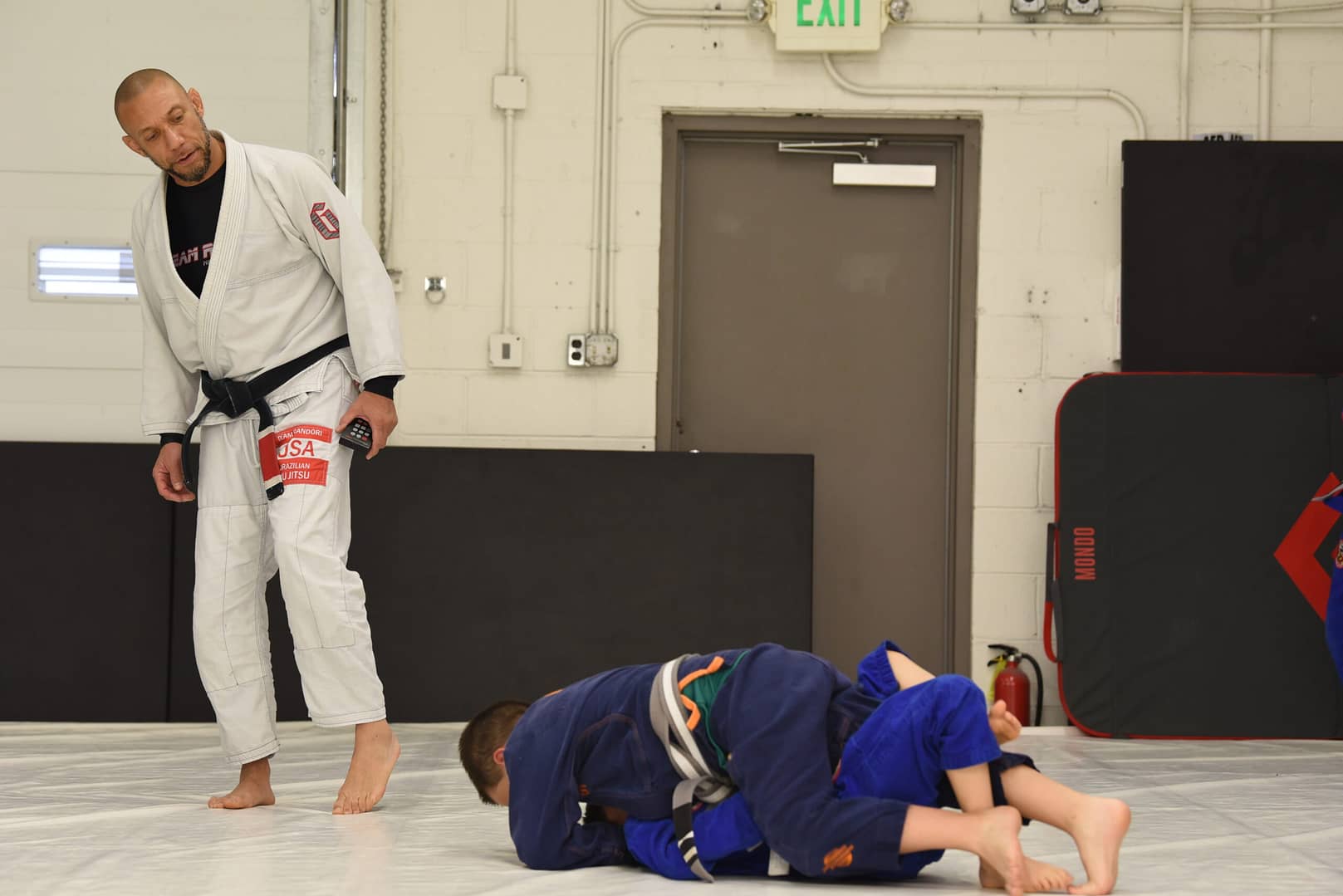
Introduction
As a parent, you want the best for your child—a healthy body, a strong mind, and unshakable confidence. In today’s world, where technology often keeps kids glued to screens, finding a way to get them active and engaged is more crucial than ever. Enter Brazilian Jiu Jitsu (BJJ)—a dynamic martial art that not only gets kids fit but also instills valuable life skills. If you’ve been searching for the perfect activity to boost your child’s fitness and confidence, BJJ might just be the answer.
Why Physical Fitness is Essential for Kids
In today’s increasingly sedentary world, physical fitness is more important for kids than ever. Regular exercise helps children maintain a healthy weight, reduces the risk of chronic illnesses, and improves their overall mood and mental health. But physical fitness isn’t just about avoiding illness; it’s also about helping kids build strong muscles and bones, which is critical as they grow.
Combatting Sedentary Lifestyles
With the rise of video games, smartphones, and streaming services, many kids spend more time indoors than outdoors, leading to a sedentary lifestyle. This inactivity can lead to obesity and other health issues. Encouraging your child to participate in a physically demanding activity like Brazilian Jiu Jitsu can combat these effects, ensuring they get the exercise they need to thrive.
The Importance of Cardiovascular Health
BJJ is an excellent way to improve cardiovascular health. The dynamic nature of the sport keeps kids moving constantly, which strengthens their heart and lungs. The intense but fun training sessions in BJJ provide a full-body workout that promotes heart health and enhances endurance.
Brazilian Jiu Jitsu: The Ultimate Fitness Solution
Brazilian Jiu Jitsu isn’t just another martial art; it’s a full-body workout that combines strength, flexibility, and endurance. Unlike traditional sports that may focus on one aspect of fitness, BJJ provides a comprehensive approach, making it the ultimate fitness solution for kids.
Full-Body Engagement
In BJJ, every part of the body is engaged—from the core muscles to the legs, arms, and back. Techniques involve pushing, pulling, lifting, and twisting, which means that kids develop strength and flexibility simultaneously. This holistic approach ensures that all muscle groups are worked on, contributing to balanced physical development.
Functional Strength
BJJ builds functional strength, which is the kind of strength needed for everyday activities. This isn’t about lifting heavy weights but about being strong enough to control one’s body and movements. For kids, this can translate into better posture, improved coordination, and the ability to handle physical tasks more effectively.
How BJJ Builds Confidence in Kids
Confidence is one of the most significant benefits of Brazilian Jiu Jitsu. As kids learn new techniques and see their progress on the mat, they build a sense of accomplishment that carries over into other areas of their lives.
Overcoming Challenges
In BJJ, kids are constantly faced with challenges—whether it’s mastering a new move or sparring with a more experienced partner. By overcoming these challenges, they learn resilience and develop the confidence to tackle obstacles outside the dojo as well.
Celebrating Small Wins
Every new belt or stripe earned in BJJ is a testament to a child’s hard work and dedication. These small victories add up, helping kids feel proud of their achievements. This sense of pride boosts their self-esteem and encourages them to set and achieve goals, both on and off the mat.
Developing Discipline Through Martial Arts
Discipline is a cornerstone of Brazilian Jiu Jitsu. The structured environment of a BJJ class teaches kids the importance of following rules, listening to their instructors, and showing respect to their peers.
The Role of Routine
BJJ classes are typically structured with a warm-up, technique drills, and sparring sessions. This routine helps kids develop discipline by teaching them to follow a consistent schedule, focus on their tasks, and commit to regular practice.
Learning Respect and Humility
In BJJ, respect is paramount. Kids learn to respect their instructors, training partners, and even their opponents. This respect translates into humility as they understand that there is always something new to learn and someone better to learn from.
The Social Benefits of BJJ: Building Friendships and Teamwork
While BJJ is often seen as an individual sport, it has significant social benefits. Kids train with partners, work in groups, and learn the value of teamwork and collaboration.
Building Lifelong Friendships
Training in BJJ creates a unique bond between kids as they support each other through challenges and celebrate each other’s successes. These friendships often extend beyond the dojo, providing a strong social network for your child.
Developing Teamwork Skills
Even though BJJ is an individual sport, teamwork is crucial during training. Kids learn to work with their partners to practice techniques, offering support and encouragement. These teamwork skills are invaluable in school and other areas of life.
BJJ vs. Traditional Sports: A Comparison
When it comes to getting kids active, traditional sports like soccer or basketball are often the go-to choices. However, Brazilian Jiu Jitsu offers unique benefits that set it apart from these activities.
Individual Progression vs. Team Dependency
In traditional sports, a child’s success often depends on the team’s performance. In BJJ, progression is individual. Each child moves at their own pace, earning belts and stripes based on their personal growth and dedication.
Focus on Skill Development
While traditional sports emphasize competition, BJJ focuses on skill development. Kids are encouraged to learn and master techniques rather than just winning a game. This emphasis on learning fosters a growth mindset, where kids understand the value of continuous improvement.
How Brazilian Jiu Jitsu Enhances Mental Toughness
BJJ isn’t just a physical workout; it’s also a mental one. The mental challenges kids face in Brazilian Jiu Jitsu help them develop toughness and resilience that benefit them in all areas of life.
Handling Stress and Pressure
In BJJ, kids often find themselves in challenging situations where they need to think quickly and stay calm under pressure. These experiences teach them to manage stress effectively, a skill that is incredibly valuable both in school and in everyday life.
Problem-Solving Skills
Brazilian Jiu Jitsu is often referred to as “human chess” because of the strategic thinking it requires. Kids must constantly assess their opponents’ movements and plan their next move, which sharpens their problem-solving skills.
Safety First: Why BJJ is Safe for Kids
As a parent, safety is always a concern when choosing an activity for your child. Brazilian Jiu Jitsu is one of the safest martial arts for kids, thanks to its emphasis on technique over brute force.
Controlled Environment
BJJ classes are conducted in a controlled environment under the supervision of experienced instructors. The focus is on technique and control, which minimizes the risk of injury.
Non-Impact Nature
Unlike striking martial arts that involve punches and kicks, BJJ focuses on grappling and submissions, which are generally safer for kids. The lack of high-impact strikes makes it a safer option for young practitioners.
Cross-Training Benefits: Why Kids Should Try Other Martial Arts Too
While Brazilian Jiu Jitsu is a fantastic martial art on its own, cross-training in other disciplines can provide additional benefits. Exploring different martial arts helps kids become well-rounded athletes.
Complementary Skills
Martial arts like Judo, Wrestling, or Muay Thai offer skills that complement BJJ. For example, Judo enhances throwing techniques, while Muay Thai improves striking skills. Cross-training allows kids to develop a broader skill set.
Avoiding Burnout
Practicing the same sport repeatedly can sometimes lead to burnout. Introducing other martial arts keeps training exciting and fresh, ensuring that kids stay engaged and motivated.
Choosing the Right BJJ School: What Parents Need to Know
Selecting the right Brazilian Jiu Jitsu school is crucial to your child’s success in the sport. Here are some key factors to consider when making your choice.
Instructor Qualifications
The quality of instruction is paramount in BJJ. Look for schools with experienced, certified instructors who have a track record of working well with kids. It’s important that the instructor is not only skilled in BJJ but also understands how to communicate effectively with children.
Class Structure and Size
The structure of the class is also important. Small class sizes allow for more personalized attention, which is crucial for kids who are just starting out. Additionally, a well-structured class with a balance of warm-ups, technique drills, and sparring ensures that kids stay engaged and learn effectively.
School Environment
The atmosphere of the school should be welcoming and supportive. A positive environment where kids feel safe and encouraged to try new things is key to their growth in BJJ. Visit the school, observe a class, and speak with other parents to get a sense of the environment before enrolling your child.
Conclusion
Brazilian Jiu Jitsu is more than just a sport; it’s a way to help kids develop physically, mentally, and socially. From improving fitness and building confidence to fostering discipline and creating lasting friendships, BJJ offers a holistic approach to your child’s development. If you’re looking for an activity that will keep your child active, engaged, and growing in all the right ways, Brazilian Jiu Jitsu is a perfect choice.
FAQs
Is Brazilian Jiu Jitsu suitable for kids of all ages?
Yes, Brazilian Jiu Jitsu is suitable for kids as young as four years old. Many schools offer specialized classes for different age groups to ensure the training.
How often should my child attend BJJ classes?
For beginners, attending BJJ classes 2-3 times per week is a good starting point. As they progress, they may choose to attend more frequently to continue improving their skills.
Will my child get injured in BJJ?
Like any physical activity, there is a risk of injury in BJJ. However, because BJJ emphasizes technique over force and is conducted in a controlled environment, it is generally considered a safe martial art for kids.
What should my child wear to BJJ classes?
Your child will need a gi (uniform) for BJJ classes, which can be purchased from the school or a martial arts supply store. Some schools may also have a no-gi option, where students wear athletic clothing instead.
Can BJJ help my child with bullying?
Yes, BJJ can be an effective tool in helping children deal with bullying. The confidence, discipline, and self-defense skills they learn in BJJ can empower them to stand up for themselves and handle difficult situations more effectively.
Don’t miss this chance to jumpstart your martial arts journey! Sign up for your free trial membership today and experience firsthand what makes Team Randori Martial Arts a leading martial arts school in Annapolis. Join us for an unforgettable training experience and discover how martial arts can transform your life.
Take the first step towards a healthier, more confident you. Visit Team Randori Martial Arts and claim your free trial membership now!
Professor Al Hogan is a recent inductee in the U.S. Martial Arts Hall of Fame (2024) and a two time IBJJF Masters World Champion and Pan American Champion. He is renowned for his expertise in Brazilian Jiu Jitsu and Defensive Tactics Instruction, catering to the Jiu Jitsu enthusiast, law enforcement, military and security personnel.
👊 If you’re ready to amplify your Jiu Jitsu journey under Professor Al's tutelage, we offer you a complementary 1 Week Free Membership in our academy.


